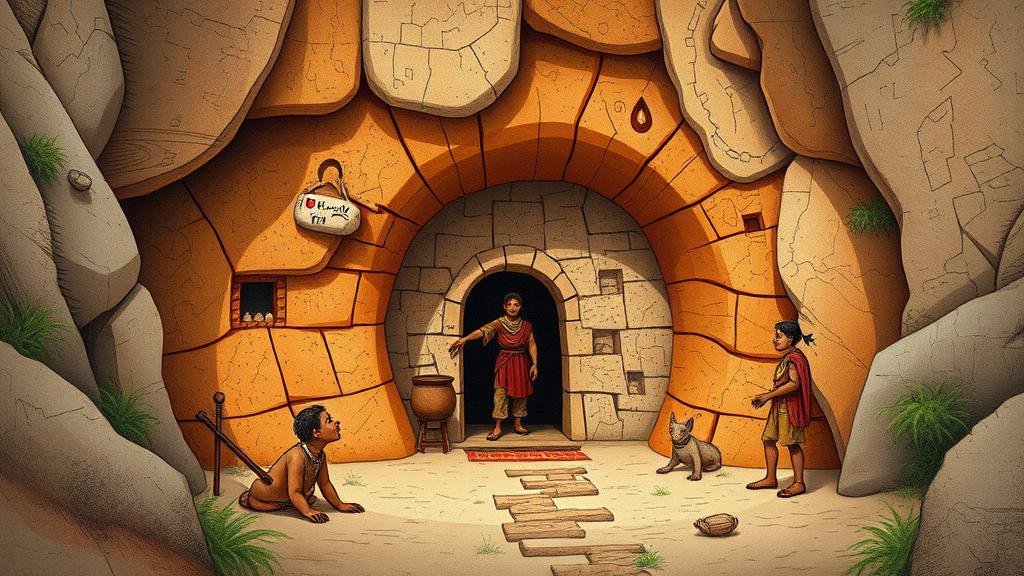The role of indigenous oral traditions in mapping ancient tunnel entrances.
The Role of Indigenous Oral Traditions in Mapping Ancient Tunnel Entrances
Indigenous oral traditions have long served as vital reservoirs of knowledge, guiding generations in their interactions with the environment and the landscapes of their ancestors. Among these traditions, stories of ancient tunnel entrances highlight the profound connection between culture, history, and geography. Such narratives not only preserve historical truths but often contain instructions on locating significant sites. This article explores how these oral traditions have been instrumental in mapping ancient tunnel entrances, specifically in regions like the Americas and the Pacific Islands.
The Significance of Oral Traditions
Oral traditions are more than just stories; they are living documents that capture the essence of a culture. They serve various purposes, including:
- Preserving history and genealogies;
- Transmitting cultural values and practices;
- Providing instructions for navigation and survival.
For indigenous communities, these stories are integral to their identity, shaping how they understand their place in the world. One prominent example is the Navajo Nation in the Southwestern United States, where oral narratives recounting the creation of the landscape offer vital clues about historical locations, including tunnel entrances used by their ancestors.
Across various continents, oral traditions have mapped the locations of ancient tunnels. In the Andes, for example, the Quechua people tell stories about hidden tunnels used by the Incas for trade and communication. Anthropological studies indicate that these oral maps can correlate with archaeological findings. In the 1990s, researchers uncovered a series of ancient tunnels in the Sacred Valley of Peru, which were precisely indicated in the stories passed down through generations.
Similarly, in Polynesia, oral traditions describe the paths navigated by ancestors, which often include references to subterranean entrances used for shelter or escape. In particular, the Islands of Hawaii possess a rich tapestry of legends that describe cave systems. One notable example is the legend of the Menehune, a mythical race that supposedly constructed elaborate structures and tunnels throughout the islands. These stories have led archaeologists to discover and excavate various tunnel systems that align with traditional accounts.
Bridging Tradition with Modern Technology
The intersection of indigenous knowledge and modern technology yields powerful insights. Techniques such as Geographic Information Systems (GIS) are employed to analyze the locations described in oral traditions and compare them with satellite imagery. This synergy has proven effective in uncovering new sites and understanding ancient networks of human habitation.
In Canada, the partnership between Indigenous communities and archaeologists has led to significant findings regarding the mapping of ancient trade routes. The oral histories of the Haida Nation have informed the exploration of underwater tunnel systems around Haida Gwaii. e collaborations highlight how indigenous perspectives can enhance contemporary archaeological practices, leading to a richer understanding of historical contexts.
Challenges and Preservation Efforts
Despite the wealth of knowledge contained in oral traditions, several challenges impede preservation efforts:
- The loss of fluent speakers as communities modernize;
- The lack of formal documentation and scholarly attention;
- External pressures, such as environmental degradation.
Efforts to combat these issues are ongoing, with many communities actively working to document their histories. Programs centered on language preservation and storytelling workshops serve to empower younger generations to carry on these traditions. Also, incorporating indigenous knowledge into educational frameworks helps ensure the survival of these valuable cultural resources.
Conclusion: Embracing Indigenous Knowledge
The role of indigenous oral traditions in mapping ancient tunnel entrances is a testament to the intricate ways in which culture, history, and geography intertwine. As guardians of their communities’ narratives, indigenous peoples offer profound insights into the ancient landscapes that shaped their lives. By valuing and integrating these oral histories, researchers and policymakers can foster a deeper understanding of human history while paving the way for sustainable preservation efforts.
Moving forward, embracing the wisdom of these traditions alongside technological advancements is imperative. As we acknowledge the contributions of indigenous peoples, we open pathways to enriching our collective memory and ensuring that these vital narratives endure for generations to come.



